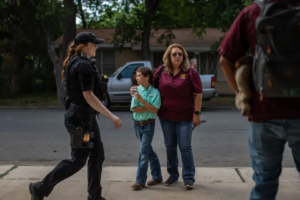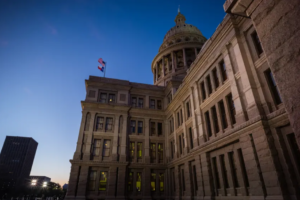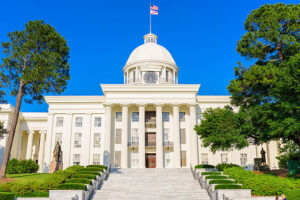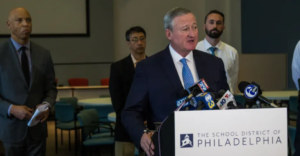New York’s outgoing governor liked to cast himself as a master builder of transportation projects, regularly invoking the specter of Robert Moses in speeches at rail stations and airports.
From the opening of the Second Avenue Subway in 2017, to the ongoing renovation of LaGuardia Airport and the recent overhaul of Penn Station, Gov. Andrew Cuomo rarely failed to mention Moses, the political strongman who shaped the region’s transportation network over several decades, destroying some neighborhoods in the process.
Now, the state’s 56th governor, who ran the MTA with an iron fist, is set to depart office with a host of signature transportation projects still in flux. Among them: the long-stalled congestion pricing plan that’s supposed to generate billions of dollars for the MTA and help fund its five-year plan to maintain and expand the system.
Cuomo’s resignation announcement also came on the same day the U.S. Senate passed an historic $1.2 trillion infrastructure bill that could send New York billions for massive undertakings like the Hudson River Gateway tunnel building-and-repair effort — a project the governor was hot-and-cold on.
As Cuomo submitted his two-week notice, popular former New York City Transit chief Andy Byford, who quit in January 2020 after frequent clashes with the governor, expressed hope for a transit turnaround like the one he outlined two years earlier in his “Fast Forward” blueprint for improving subway, bus and paratransit service.
“I hope that, going forward, the MTA will be given the leeway to deliver New Yorkers the modern, fully accessible transit system that Fast Forward promised,” Byford, now overseeing Transport for London, told THE CITY.
“And that can now definitely become a reality,” added Byford, nicknamed “Train Daddy” by his New York fans.
Cuomo’s exit comes with the MTA’s top leadership already in transition, after he last week named Janno Lieber as acting chairman and CEO. As New York emerges from the pandemic, the agency is struggling to regain bus and subway ridership amid staffing shortfalls that have led to an increase in canceled subway and bus trips.
“There was a total miscalculation on staffing and that has to be left at the feet of the governor,” John Samuelsen, international president of the Transport Workers Union and an MTA board member, told THE CITY. “That’s gross incompetence.”
Waiting for the Toll
In addition to the operational challenges facing the MTA, the agency is pushing ahead on the largest five-year capital program in its history, which was put on hold for nearly a year due to the financial fallout from the pandemic.
But the congestion pricing plan championed by Cuomo that would toll vehicles entering Manhattan south of 60th Street remains stuck in neutral, leaving the MTA, for now, without a key revenue source that was expected to generate billions of dollars in capital funding.
For two years, Cuomo blamed the Trump administration for not starting the environmental review required of the tolling plan that was supposed to start earlier this year.
Yet, even after President Joe Biden’s administration gave the greenlight in March to the environmental assessment, congestion pricing is still not a reality — though the MTA has said it’s fine, for now, without the funding.
“The fact that it’s not going to be in place by the end of the year reflects the failures of [Cuomo’s] management style,” said Ben Fried of TransitCenter, an advocacy and research organization.
Toll collection from congestion pricing is central to the MTA’s $51 billion capital program, a five-year plan whose highlights include modernizing signals along stretches of six subway lines, making 66 more stations fully accessible to riders with disabilities and buying 1,900 new subway cars that are compatible with signal upgrades.
The plan also aims to extend the Second Avenue Subway from 96th Street to 125th Street, the proposed second phase of a line that had been on the drawing board for close to a century when it opened four years ago.
Larry Schwartz, a longtime Cuomo confidante and MTA board member, counted that as a win.
“He’s the one that got the Second Avenue subway finished,” Schwartz told THE CITY. “The thing floundered for many years, with billions in cost overruns, until he got it finished.”
Halls and Hallmarks
The three-station extension beneath Second Avenue bears the hallmarks of other Cuomo transportation projects, several transit watches noted, with brightly lit and cavernous stations.
It’s a pattern seen in other signature Cuomo transportation projects, such as the Moynihan Train Hall that opened Jan. 1 and the redevelopment of LaGuardia Airport, which he controls through his stake in the Port Authority.
Cuomo repeatedly touted the LaGuardia overhaul as “the first new airport in the United States in 25 years,” — despite that being not quite true.
It’s supposed to include an AirTrain rail connection from the No. 7 line station at Mets-Willets Point to the airport — a project that many critics, who prefer a one-seat ride between Manhattan and LaGuardia, call a waste of money.
Cuomo also unveiled plans for a new international terminal at JFK Airport just last week, shortly before State Attorney General Letitia James outlined her office’s sexual harassment investigation.
Not all Cuomo transportation projects have been new or shiny. In 2017, he led the so-called “Subway Action Plan” of quick fixes for an aged system staggered by mounting delays, track fires and rider misery.
“He had the state put up money and he forced the city to put up money to address the issues that were ignored for many years,” Schwartz said. “None of that would have happened without him.”
Samuelsen, a former Cuomo ally who has recently become a harsh critic, praised Cuomo for repeatedly squeezing Mayor Bill de Blasio for additional MTA funding from City Hall.
“But whatever positive he did in 2017 and 2018 has been so thoroughly diminished by the unnecessary and brutal micromanagement of the system,” Samuelsen added.
Another Cuomo transportation-centric project that remains on the drawing board is the plan to eventually overhaul Penn Station and its surrounding blocks as part of a massive real estate deal that could reshape the Manhattan skyline.
Fried, of TransitCenter, said the glossy project should be scrapped in favor of less-glamorous subway fixes.
“I hope the state drops the LaGuardia AirTrain and the Penn Station blockbuster behemoth plan and focuses on the nitty gritty of system maintenance, subway accessibility and signal modernization,” he said.
Hochul at the Wheel
Transit advocates and MTA board members also sounded a hopeful note for changes to how the agency will operate under Governor-to-be Kathy Hochul.
“Despite what’s happening in Albany, riders should feel assured that the MTA will stay on track to get them where they need to go,” said Lisa Daglian, executive director of the Permanent Citizens Advisory Committee to the MTA.
Cuomo’s impending exit could also lead to extensive changes on the MTA board, thanks to a tweak in state law that he pushed for in 2019. The law says that the term of any board member expires alongside that of the city or state elected official who recommended them for the post.
It’s not clear what may happen with Cuomo’s early exit from office.
Robert Linn, who was named to the MTA board by de Blasio, said public sector work in a “secretive, intimidating, toxic and hostile environment” is “debilitating.”
“But hard work in the public sector in an open, collaborative, friendly and problem-solving environment is inspiring,” Linn told THE CITY.
Another board member, Neal Zuckerman, who was appointed by Putnam County Executive MaryEllen Odell in 2016, praised Cuomo for focusing on “operational efficiency and capital investment,” with signature transportation projects that have “benefited New Yorkers.”
But he said Cuomo’s heavy-handed involvement has coincided with “a chilling of the board’s collaboration, cross-regional debate and thoughtful engagement.”
“The MTA, as an independent public authority, should be governed as one,” Zuckerman said.
This article was originally posted on Many of Cuomo’s Big Transit Projects Remain Divisive, Incomplete






Be First to Comment